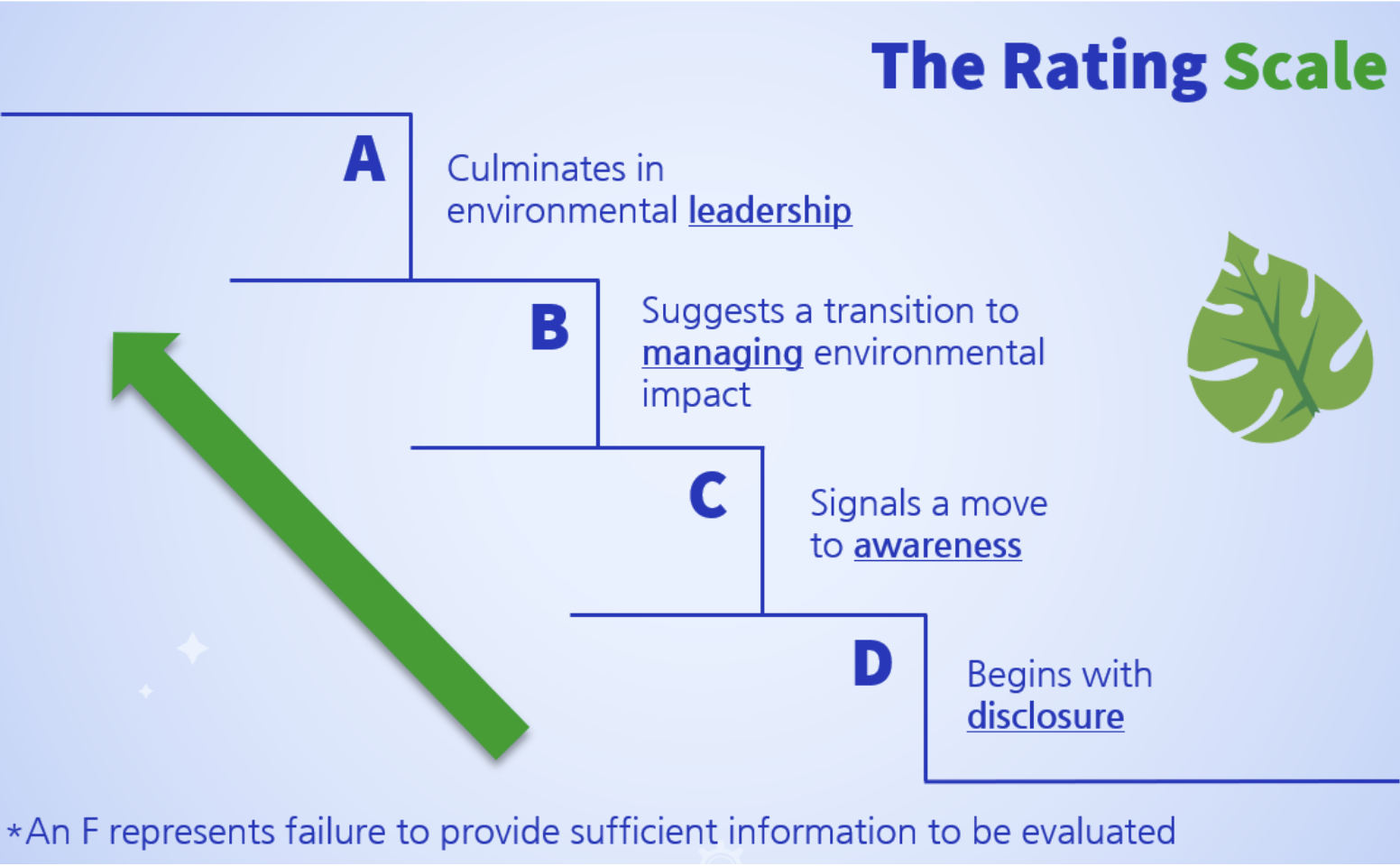Scoring Well on the CDP
by Danny McGee & Chelsea Glisson
At Foresight, we love the adage, “you can’t manage what you don’t measure.” Without actual data, you can’t make strategic decisions for the good of your company - and others agree. While there are a host of reporting frameworks for companies, the CDP is one of the most comprehensive frameworks with unique benefits. Because of its layered scoring structure, though, it can be challenging to get a “good score.” Here’s a look at how it works.
Why CDP?
Unlike other reporting frameworks, the CDP is not tied to a product or industry; it was founded by investors, for investors. It is a global disclosure system for investors, companies, cities, states, and regions to manage their environmental impacts, making risk management a business norm in order to drive a sustainable economy. In other words: investors want to understand the stability of their investments. Since “climate risk is financial risk” (thanks, Larry Fink!), investors, suppliers, and customers are evaluating the quality of their investments through environmental, social, and governance transparency.
This championing of transparency creates a flywheel effect. Increased corporate data provides new industry insights, benchmarking, and competition while also supplying institutions with critical data for research. These metrics drive national and global climate change policies and initiatives which garner the attention of investors. Which companies do they want to invest in? The ones with formidable, proven sustainability plans; the ones who are leading in their industries.
What Is the Benefit of Responding to the CDP?
While responding to the CDP can sometimes be optional, lots of large companies are requesting that their entire supply chain fill out this survey. If you haven’t been requested to fill out the CDP yet, odds are it’s in your future. If you’re requested to fill out a survey and you miss the scoring deadline you will be labeled with a big, fat, F. More than just appeasing your customers, here’s a look at what you stand to gain by responding to the CDP:
Performance Benchmarking
Annually responding to the CDP tracks performance over time, measuring year-over-year growth and improvement for your company compared to your competitors. With data in hand, you can assess your gaps and create a strategic sustainability plan to become a leader in your industry. The first step, however, is to know where you are in the race. CDP provides a concrete score and outlines exactly which categories need attention.
Risk Management
At the bare minimum, responding to the CDP shows that you take climate change seriously. Not acknowledging the global climate change crisis doesn’t create a great reputation for your company. Pressure is mounting not only from investors but also from customers and suppliers. When suppliers request your disclosure to meet their carbon reduction goals, you must take these requests seriously.
Driving Change
The CDP intentionally keeps up with the requirements of other governing bodies. As additional requirements and recommendations are added to the climate discussion, the CDP integrates these into its framework, making it easy for your company to stay up to date on industry changes. When new sections or questions are added to the surveys, the CDP typically gives companies one year to “try” to respond to the question without any negative impacts if they fall short. This way, companies have a year to start thinking about the new requirements, all the while staying ahead of industry expectations without having to research each and every amendment regarding climate change.
Aligning Reporting Frameworks
The industry term is “alignment,” but we like to call it “double-dipping.” The CDP works hard to align with other global reporting frameworks, such as SASB, TNFD, and RobecoSAM. Responding to the CDP will gain you additional credits or qualify as a component of another framework. Your CDP efforts pay back double as they are transferable to other mechanisms.
Scoring Well on the CDP
The CDP is a layered scoring mechanism; you have to receive the minimum score of each level in order to unlock the following levels. Without the minimum score on the Disclosure level, your company cannot move up to Awareness, Management, or Leadership. Even if you achieve Leadership points on certain questions but fail to meet the minimum threshold at the Disclosure level throughout the survey, your score will still be a D. There is an immense strategy in how, what, and when to report on different components, where you may have transferable information from other mechanisms, and which points to approach from another angle. Scoring well on the CDP doesn’t just rely on having the most robust data, it also relies on strategy.
Don’t be discouraged, though. Responding to the CDP is a journey, not a destination. With values such as accountability, learning, and improvement, CDP celebrates year-over-year improvement, acknowledging that it all starts with trying. The very first level of Disclosure challenges companies to simply find their data and iron out a reliable, accessible approach to data collection and analysis. You cannot measure progress without this data, but with it, you can strategize your efforts and improve your score. When you establish consistent, validated data streams, moving up the CDP scoring ladder becomes more manageable.



